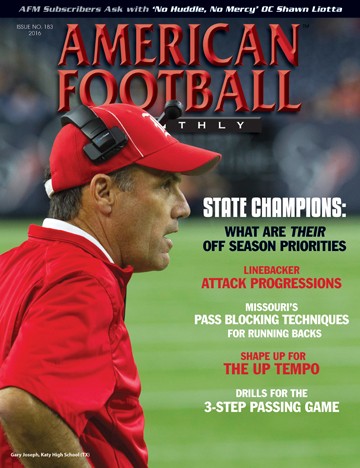Article CategoriesAFM Magazine
|
Creating Turnovers Through Ball Disruptionby: Dave Marean, Head CoachWayne Central High School (NY) © More from this issue As a head coach for 11 years, I have also worn the title of the offensive coordinator and defensive coordinator, and even though I am an offensive coordinator by heart, I realize more and more in this profession how important your defense is to your program’s success. As a defensive coordinator, one of the things I like to do after every season is review each game film and try to see what made us successful and what hurt us each game. Defensively, the main things I like to focus on while watching film are: our alignment, assignment, tackling, team pursuit and ball disruption (turnovers). Recently I started to look at our results from season to season to see if there were any continuous traits that were not allowing us to be successful defensively. Some years it could be as simple as we just did not have the “Jimmys” and the....The full article can only be seen by subscribers.
|
|
|||||||
| HOME |
MAGAZINE |
SUBSCRIBE | ONLINE COLUMNISTS | COACHING VIDEOS |
Copyright 2025, AmericanFootballMonthly.com
All Rights Reserved





